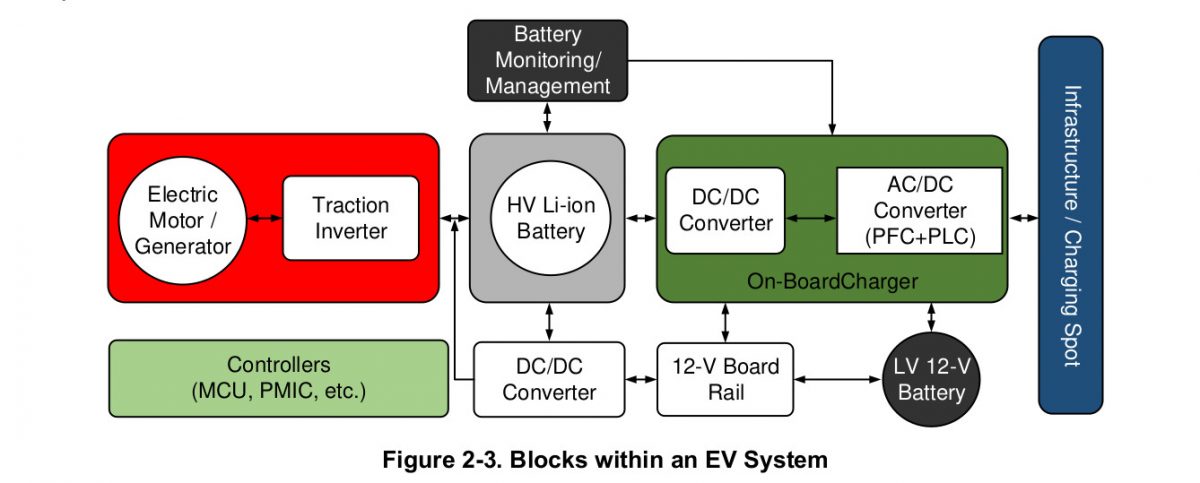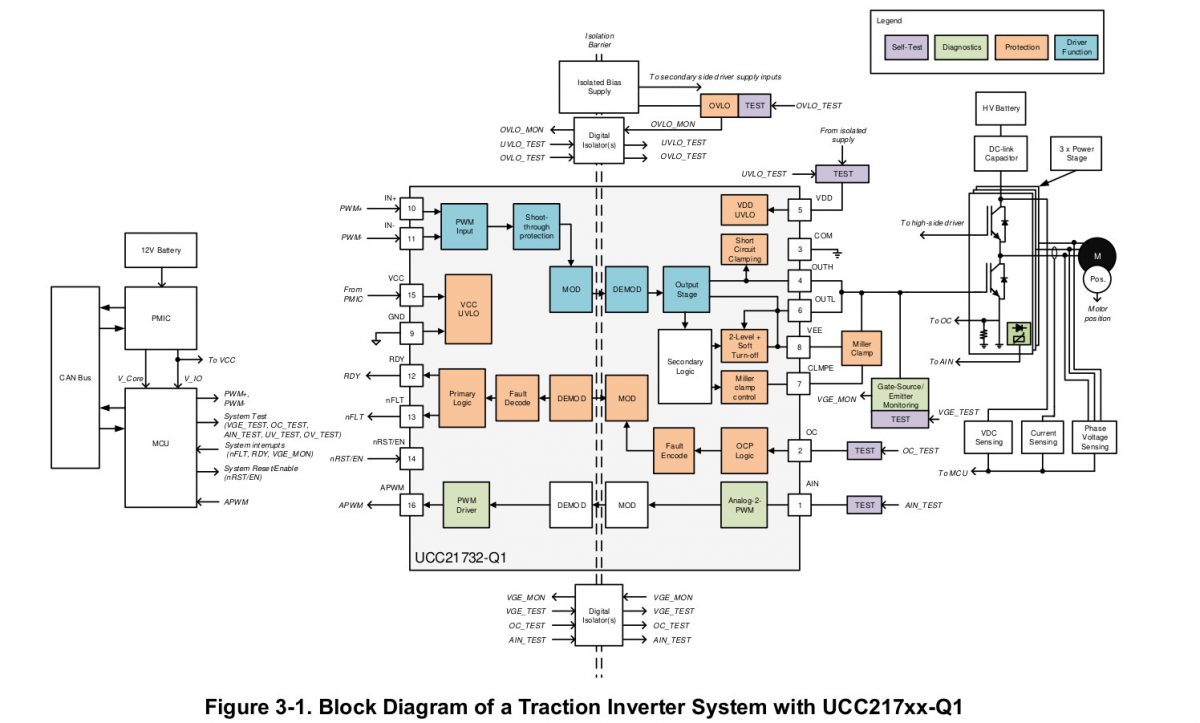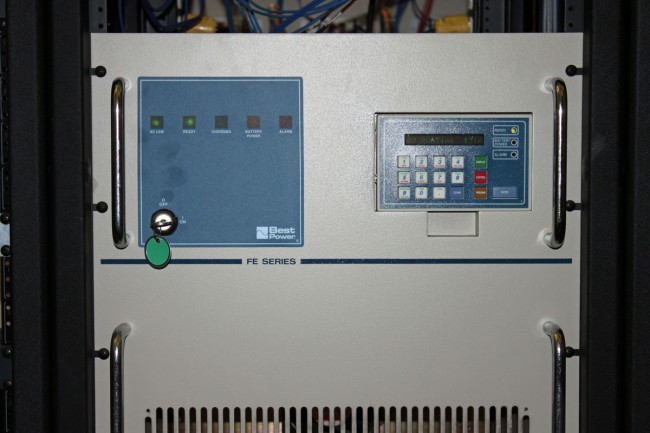I have been reading with interest the ongoing discussion about AM radios in Electric Vehicles. Rather than rehash the what, I thought it would be nice to dig into why it is happening.
My first thought is that many of the electronics use PDM or PWM to control various stages of charging, converting, or discharging the storage system. I quick review of a typical EV basic diagram shows that there are several systems involved
Searching through various chip makers’ data sheets on Li-ion battery chargers, DC voltage to voltage converters, regenerative braking systems, traction motor inverters, and so on shows that all of those systems use PWM. Some of those PWM frequencies are right in the AM band, while others are not. That explains why different manufacturers have different takes on AM radios in EVs.

All of those electrical components are controlled by an electronic system that handles battery charging,

This basic diagram shows several sections that rely on PWM to function. The traction inverter is very complicated, with sensors running to each motor and each wheel for traction control, etc.

I imagine the average EV driving down the road in a cloud of PWM-based electrical noise. Whether or not that creates interference with AM reception depends solely on the PWM frequency the chip manufacturer chooses. That is not all, even when sitting in the garage charging, the Li-ion battery chargers use PWM.
It seems a monumental task to attempt to mitigate the noise issue. The real question is; does the general public and more specifically, those who want to own an EV care about AM broadcasting?
There are many alternative entertainment options these days. I would say the average Tesla driver listens to iTunes.
It would be interesting to test MA-3 reception in a Tesla. That would be a real-world test to see how the HD Radio codec stands up to electrical noise. I would say the same about DRM, but you would need to find a receiver first.







I am firmly of the belief that this issue has nothing to do with interference. Instead, it has everything to do with auto OEM’s decision some 10 or 15 (maybe 20) years ago that the entertainment center of a car’s dashboard was valuable real estate, and that anyone who wanted to be on it had to pay up. Satellite radio was the beginning of this, where automakers wouldn’t put the then-separate companies of Sirius and XM Radio’s receivers into their dashboard unless the company paid them for it. Not long after, a similar dynamic came to pass with Android Auto and Apple CarPlay.
From the get-go, automakers have loathed the “free ride” that AM/FM have gotten into this valuable “real estate”. And the other entities that have to pay to be there loathe it even more.
So this isn’t about “getting rid of AM”. It’s about getting rid of RADIO, period. AM is just the first step, and one they can plausibly make after decades of self-inflicted wounds…including the enourmous boondoggle of “AM Revitalization” that moved all these AM stations to FM Translators.
The only defense…ONLY defense…radio, including FM radio, has against this are its listeners. Consumers who are willing to return a car the day after they bought it because the “radio is broken” when they can’t get their favorite station. Unfortunately, market forces have pushed radio to offer simulcasts on the web that are…if the network technology in the given location of the car is robust enough…completely indistinguishable from (if not superior to) the AM/FM broadcast.
Aaron, You are correct, there is a battle for the dashboard. Large monolithic corporations like Apple, Google, Microsoft, etc have bucketloads of money to throw at carmakers for the inclusion of their apps in dashboard electronics. That being said, however, it seems the single station/one-owner FMs that concentrate on local advertising are still very popular with the listeners.
A couple of years ago, one of our clients was getting interference from an out-of-town translator operator. Attempts to reach the owner of the interfering translator went unanswered. The station set up an email address for listeners to send complaints to and within a few weeks they receive well over one hundred emails from the affected area. Their attorney then filed a complaint with the FCC and within a few days, the FCC forced the translator owner to shut down. So, you are right, listeners can make a difference.
Since AM is the home of most of the conservative talk shows, could
it be part of the calculation?
Pivot: Electric vehicles aside, my untrained ear, without instruments to back me up, tells me that AM radios (aftermarket and mfr-installed), and/or the ICE-engined cars they’re in, just sound noisier than they were some 30ish+ years ago. Anyone else?
I didn’t want to bemoan how things worked better back when, but at some point there’s only so much isolation and grounding and such which can be done in a modern vehicle.